För detta inlägg på Svenska klicka här
A guide to easily understanding the 16th century female outfit in Northern Europe, focusing on women from lower social standing.This guide is made as a collaboration between me Cathrin Åhlén and Andrea Dolores that runs the blog “The Vulgar Crowd”
Before you begin it is vital to think about what kind social class, or type of woman, you want to recreate. This has nothing to do with LARP:ing (live action role playing) or acting. It is simply to do with making a construction that feels historically relevant. Woman differs from each other in the 16th century, not only due to social standing. Even women from the same social class dressed differently according to her place in society.
That is why it is a bit unfortunate to put all these amazing women together in the same group as many tend to do today. It is important to know that women of the tross which followed the mercenaries, such as the landsknecht, were not female landsknecht, they were not soldiers. They followed the tross because of what the soldiers may need during military campaigns: help with domestic chores, as companions, whores, and different professional craftswomen. The captain’s wife did not have the same function as for example the wine maker/seller, but instead holds a different status in the group.
That is why it always is good to know who you want to recreate and what her role in the tross might be. First when you know this can you move forward and build your wardrobe. It might seem really boring, but this is only to help you make the right decisions for your outfit and should only be seen as something positive; as a helping hand.
Something that is worth thinking about is that the women in the tross during early modern time chose to follow a dangerous, erratic and by the society excluded group; the landsknecht. During this time in Europe the landschnecht was associated with violence, terror, and bloodshed. The society both hated and feared them. That is why it is most likely that the vast majority of the women, which in spite of this chose to follow them, came from the lower classes of society without any higher social status.
As these women, as we have discussed, are not a unitary group, calling them for “kampfraus” is of course incorrect. Instead we should look at what these women really were. By stepping away from the far too generalized mold “kampfrau” and instead start to think “lower class women” you in a way get a lot more freedom in your creativity, as you now choose to create a person with a profession or role in the camp and not only a platitude. That is why the word “kampfrau” is such a bad and foremost historically incorrect word to use. The word kampfrau have long been in use in different societies and have because of its popularity spread beyond these societies, so far that people are not aware that it is a made-up word. To with one word smooth out the diversity of the women of the tross feels incredibly sad and also disparaging to the history of the women.
Underwear
As you might have noticed, the figure in the picture is only wearing a pair of hose. There is a reason for this, and that is the fact that this is the bottom layer. Corsets, stays, panties and bloomers came much later in history. The earliest extant pair of stays are from late 16th century and panties are a much later invention; they appear a bit into the 20th century, when skirts become shorter they started looking as what we are used to seeing them.
If your aim is to be as correct as possible, this is your bottom layer.
The hose are made out of wool fabric and cut on bias to give them as much stretch as possible. As you can see it has a sewn sole that continues up on the leg in a gusset. It also has a seam in the back to make it possible to shape the hose after the leg. As a woman you wear knee high hose that is fastened with garters which are tied around the leg. The hose can both be of solid colour or vertically striped, but the solid coloured hose seems to be most common on women of lesser means.
Watch out for
Modern underwear – It is hard to build a historical silhouette when you are shaped by modern underwear.
Corsets and stays – Not everything from the 16th century is Tudor. If you look at art from the period you will see that the silhouette of the dresses from England, Italy and Germany differs from each other quite a bit. In Germany you can see that you have a more rounded bust, not the more cone-like shape an early stay will give you.
Shoes
Shoes during this period vary widely and simpler and heavier shoes is a marker of a person of lesser means. The most visually prominent and fashionable shoe in the 16th century is the cow moth shoe, a flat shoe with a square shape in the front. The shape ranges from slightly rounded to more extravagant versions.
Something which is worth mentioning about the shoes in the 16th century is that they are welt sewn unlike the earlier shoes, which were turnshoes.
This means that they are sewn on the last with the right side out and have an insole which the upper is attached to, and then have an outsole which is attached under this. The outsole is attached to a strip of leather called welt. The welt is attached to the shoe in the same seam which binds the insole and upper together.
In turnshoes this piece of leather is called rand. The use of a welt and outsole makes it a lot easier to change the sole of the shoe when it is worn down without actually interfering with the construction of the rest of the shoe.
When the outsole is sewn to the welt you will get a visible seam, much in the same way which you can see in a classical dress shoe.
The cow moth shoes are not the only shoe worn at this period of time, there is a plethora of shoes. That is why it is important to look at the shoes in the area which you have chosen to recreate. Also look at the class from you have chosen to work within. Farmers are often depicted with heavier more rounded shoes and finer folk seem to be using daintier shoes, both more decorated and slashed.
Watch out for
Wrong shoe on the wrong person – Just because a shoe model has been in use in England in 1520 does not mean that that shoe can be used when you are doing Italian or German 1520s.
This is the same way as the fact that an English farmer did not wear the same shoes as an English king.
Visible seams – There are no seams visible on extant shoes. Neither the heel counter nor side seams are sewn with a seam that is visible from the outside.
The only visible seam on welt shoes is the welt seam that attaches the outsole.
Chemise
There is a large variety in the shape of the chemise, all from very simple with only a little width to garments where it is obvious a lot of fabric was used. The chemises comes with both high and low collars and I have a hard time seeing that either one is more common in any social class. However, taking into account the quality and the quantity of the fabric can say a lot about the social class which you are aiming for.
The collars varies from beautifully embroidered with tiny pleats to simpler pleating where you have sewn a flat linen band of the same fabric as the rest of the chemise to keep the pleats in place. The same goes for the finish of the sleeves even if the most common thing seems to be simple string which you tie with small bows at the wrist.
The closure of the chemises are often not seen. Here it is very likely that they have used hooks and eyes to keep the collar together. A hidden closure seems to be very common but other ways of closing the collar are simple linen ties or decorated braided ribbons which might match the colour of the embroidery you might have.
There are also depictions of decorative clasps, buttons, and pearls as closures, but it is worth noting that these are most often found on the upper classes and might not be fitting for a women of the tross.
Watch out for
Too short chemise – Make your chemise to your knees or to your calf. Underskirts or petticoats are not in use yet so it is the chemise job to protect your body from the wools and vice versa. But do not make it all the way to the floor, a wet linen hem is cold and not at all pleasant against your legs.
Keep to your class – A poor soldier’s wife does not have a chemise with golden bands, embroideries, and beads. Think about what choices you make and you will get a more convincing outfit.
Raw silk – It might seem luxurious with a raw silk chemise and raw silk “looks like linen”. However, raw silk as a fabric for clothing is not correct for the 16th century and silk is also sensitive to sweat, something which is not optimal for a chemise.
Under dress
As I mentioned, the use of modern bras and corsets came a lot later in history than the 16th century. However, of course they used some kind of supportive underwear. We have the Schloss Lengberg garments as an example of many different ways to support the bust in the shape of linen “bras”. The Lengberg finds are dated to late 15th century and there are a lot of images from the 14th century depicting similar “bra dresses”.
When we come to the 16th century these pictures disappear from the pictorial evidence and instead we start to see sleeveless wool dresses. We can find similar dresses all over Europe on women preforming physical labour. We do not see them on women outside the “home” or the private sphere for the simple reason that you wore a dress over it when you were in more public places.
The under dress sometimes had stripes on the skirt, especially if you were from a higher social status. With this comes all kinds of laws and regulations which tells you who are allowed to wear what kind of materials and how many stripes you were allowed to have on your skirt. The fact that these laws exist is because people broke the rules, but it might be worth thinking about; did the laundry woman have silk brocade stripes on her under dress? Almost certainly not.
There are no evidence that the under dresses were as stiff as corsets, it is common to see in images and woodcuts that the bust have a soft more rounded shape.
Watch out for
Underskirts and petticoats – There is no evidence for the use of underskirts. Many uses linen underskirts to get more shape over the hips and to protect their legs from the wool. Instead of doing that, make your chemise longer. This is something that we have pictorial evidence for and start using a full under dress to achieve those 16th century hips and to get a correct silhouette.
Modern brassiere – In the end it is simple, modern underwear will give your dress a modern silhouette. Sometimes you have to let go of your modern aesthetics to create a correct shape.
Overdress
The classical 16th century dress in northern Europe had a high waist and low neckline. The shape of the dress varied depending on where in northern Europe you were. However, generally in Germany the square neckline and closure centre front was prominent. The dress had often just as low neckline in back as in front and had very often decorative stripes at the bottom of the skirt. The skirt was pleated and sewn onto the bodice as separate skirt and a bodice was not used.
It is easy to want to emulate the grandeur of the males, but the dresses of the women were generally a lot simpler in cut and details. The slashing that is so common in the outfits of the men is almost nowhere to be seen, you can perhaps slash the stripes of the skirts or in exceptional cases the guards around the neckline and centre front.
The sleeves of the dress are also in contrast to the male puffiness and extravagance. The sleeves are often very simple with a plain sleeve with a cuff that can either be worn folded up or folded down over the hand. You can also see simpler slashing of the sleeve at the shoulders and elbows but they are much less extravagant and as big as on the men.
It is just that, the contrast between the male and female, which is so beautiful when you see the tross together. Let the men have their big upper bodies and skinny legs and let the women be the opposite, wide hips and in contrast to the hips, slim upper bodies.
Watch out for
Too low waist – Many wear their dresses on their hips and the result of that is that they never get the right silhouette. Let the waist sit where it should, a good bit over your bellybutton, and you will automatic get those nice 16th century hips and a correct silhouette.
Too high neckline – If you look at woodcuts, the neckline is often very low, this does not matter much as there is always a chemise under to cover up and to make sure that the boobs does not pop out. Dare to go lower both in the front and back and you will get a dress with a much more correct look.
Gaping lacing – It is very unusual to see the lacing on the dress, The everyday woman did not show her face in society in a dress with gaping lacing. The dress should be completely shut in front either with hidden lacing or hook and eyes.
On the head
When you look at the paintings and graphical pictures of women from the 16th century a clear picture emerges; grown-up women hid their hair. To wear your hair down is something which might have been done by extremely young unmarried women or, for example, prostitutes. However, the ordinary woman wore her hair up and almost always covered. To wear the hair up with some kind of covering is so common that you can find picture of women in bathhouses with their head covered while otherwise in the nude.
Even amongst prostitutes you see a great majority with their hair up and covered. If you don’t wish to cover your hair it should at least be braided and put up properly on the head. The visible cute braided hanging loops by the ears that peek out under the veil during the late 15th century is hopelessly unfashionable during the 16th century. If you wear a head covering, the whole hair is now covered.
A very common headpiece is the padded linen cap that is so typical for the northern European fashion. It most likely started with the braided hair being put up in the back of the head under the veil, but as all fashion it went to excess. People started to use padding of different kind, for example the wulsthaube, a padded cap, which you then draped you headdress over. The shape varies from small to enormous.
The veils can be found in all sorts of fashion, everything from undecorated linen veils and super thin silk veils to richly decorated and embroidered. As always, the question is who do you want to portray?
Watch out for
Cover your hair – the easiest way to enhance your outfit historically is to put on a proper headdress. Don’t be afraid of the padded cap, it might look strange when taken out of its context but nothing can beat it when used together with accurate clothing. If you do not want to use a wulsthaube you can choose to use a draped veil. Look at images and your will surely find something you like.
Hats
The 16th century brings a lot of variety in hats. If you generalise a bit you find that two different kinds seem to be the most popular. One is a hat with a split brim where the brim parts overlaps each other a bit with perhaps a few feathers. The other one the one that looks like it has gathered fabric underneath and is filled with feathers.
When it comes to ordinary women, hats are not always worn and when you see a hat on a women it is often of a more simple kind. It is a more safe way to go to not wear a hat; a veil or wulsthaube goes a long way. There are of course images of crazily feathered hats but that does not make it the norm to wear a whole bird stuffed into our hat. Neither is it practical for a hard working woman in the tross. A fully feathered hat is more likely to be in the way for a simple washerwoman. It seems like it is more common with feathers among prostitutes.
When it comes to the choice of feathers we can see that natural ostrich feathers are the most common during the 16th century. We can of course play with the thought that other types of feathers were used but if you look at the pictures from the period we can see that the ostrich is in extreme majority. Everyone wore them; we can see them among landsknechts, wealthy merchants and even the noblemen, such as the very fashion interested Henrik VIII.
Coloured feathers are not at all common during the 16th century. If coloured feathers was used they were of course dyed with natural dyes. The process is technically hard to achieve and that is probably why it is not common to see the coloured feathers. Instead what we see is more than anything else white or naturally grey ostrich feathers, or alternatively, naturally black ostrich feathers. Think about who you are recreating and look at images from your time and you will soon see that the coloured feathers are absent.
Watch out for
Don’t slash your hat – The popular slashed hat crown cannot be found in the pictorial sources; you can slash the underside of the brim but it is much more common to not slash at all. Decorate instead with a few feathers and don’t slash at all.
Stay away from coloured feathers – They existed but were very uncommon. If can feel nice to be able to match your dress with synthetically coloured feathers, but it is not particularly historically accurate. Why not dive into the wonderful world of natural shades of ostrich. Beautiful in the 16th century, beautiful today!
Gollar
The most common garment for keeping warm which you see in the pictures is the short cape called gollar. It can either have a high collar or no collar at all, and it can be either short or it can be more of a cloak and go down to the hips. It looks like a liripipe without the head part and can be lined in fur for extra warmth.
There are a number of images of women who wear their capes over what they carry on their backs, it is a good way to keep rain out of your packing. The gollar is as much a trending garment as it is practical and it is often decorated with contrasting borders.
On images and paintings of women from the higher social classes you often see them in silk brocade with fancy clasps, but on simpler women you almost always see no closure at all. We can presume that they were closed with hook and eyes, or that they simply lay on the shoulders. Alternatively they might have used hidden lacing which they tied together as a bow.
There are also examples of this kind of garment which looks more like short vests and are squarer in shape. Look at what is most common for the type of person you want to recreate, perhaps you have no need for a gollar.
Watch out for
Dress according to your class – It is easy to fall in love with a garment from the upper class, but as always; chose a garment that represent what you recreate. If you need to dig deep after evidence for a garment you want to make or a detail you want to recreate, you might need to stop and think for a bit. Perhaps what you are looking for was not something that was commonly done. A better starting point is to look at what the common thing to do was. Find what most people actually did. It will be a lot easier to make a believable outfit when you have cracked the code of what is probable and what was done. Just because something is from the lower classes does not automatic makes it boring and plain. Find that thing that makes your garment special.
Accessories
At the first glance the 16th century can feel very “bling” with large golden chains, rings on all fingers and on multiple knuckle joints, many necklaces at the same time. However, all these things are most common among the nobles. As soon as you step down a step on the social ladder all this disappear, especially among women of less means. You might have one ring, but necklaces of precious metals are nowhere to be seen.
On pictures of prostitutes from this time we do find these kind of accessories. However, bear in mind that these were most likely copies in less precious metals, they wanted to mimic the nobility and be showy.
What ordinary women wore was much plainer, most of what you see are accessories hanging from the belt. Small leather bags of different kinds, sewing tools, and often a simple knife; sometimes you also see keys. It seems like it was the practice to wear two belts, one that you kept your things on and one that you used for draping the dress up when marching. However, you never see two belts worn at the same time. We can presume that they had a belt specially for the draping that they took off when they wore the dress down. As this belt never was visible it would probably not been decorated with more than a simple belt buckle.
Many speaks about booty from the battlefields but think about the fact that if there was any booty this was first and foremost for the men. Wives, hang-arounds or women without any social status in the tross were probably not allowed to enjoy expensive fabrics, gold or jewellery. In other words; it is not likely that the cook and laundry woman in the tross had gold rings on all fingers.
Watch out for
Less is more – Looking like a living Christmas tree with a million things hanging off your belt or on your outfit is never a positive thing. Do not carry more things in your belt than is logical. If you need to carry a lot of stuff, than take a basket to carry in your hand, a sack, or the things wrapped up in fabric which you carry on your back. Willow baskets on your back does not seem to be common at all in the tross.
Don’t put on all your fancy jewellery – We all want the fancy stuff, but as always, reflect over who you are recreating and what is practical. It is not likely that a women that followed the tross had gold chains and lots of rings, unless she was a particularly popular prostitute.
And there we have it, the complete kit! With the help of another belt you can drape the gown up in this way, this makes it a lot easier to march and is a very common thing to see in pictures of women in the tross.
So a short recap.
Do not imitate the men, just because they look a certain way does not mean that you can copy it and put it in your women’s outfit. Also think about colours and colour combinations. Lighter colours were a lot easier to create. Perhaps it is not fitting for a poor soldier’s wife to wear a tricoloured bright purple dress with four contrast colours in the same bright colour scheme. Poorer women wore less contrast colour and lighter coloured fabrics.
It is good to think about fabrics in the same way. Silk, velvet and brocades belongs on the Saxon noblewomen in Cranach paintigns, not on the general women of the tross. To base you outfit on them is as far off as basing them on Elizabeth I most macabre feastgown.
During the medieval era and early modern time wool is the absolutely most common of fabrics both for high and low born along with linen.
It is a lot about dressing within your social class and not pick and choose details from other classes. Just because a noblewomen have pretty sleeves does not mean that your simple soldier’s wife had the same kind of sleeves; even if they both are from 1523. I instead dare you to make a simple woman, because these were the women who followed the landsknecht.
Let go of your modern ideals. The concepts of what is pretty and beautiful nowadays are not applicable in the 16th century. If you are recreating a period you are also going to have to recreate their ideal of beauty. It is also very important to keep track on what part of the 16th century you are making and were you are geographically. The fashion changes around every ten years and there are big regional differences in northern Europe, even among the simpler people and underclass.
Always check the title of your sources or image that you are using. Even if Pinterest tells you one thing does not mean that the title is correct. The original title may also reveal that what we see on the picture is actually a biblical motive or allegory. If that is the case then the picture is not suitable to base a simple German women clothing on. If something look extra strange or macabre on a picture, ask yourself the question; what type pf image is this? You cannot base your clothes on a caricature, not either a saint, queen or noble woman’s dress – at least not if you want to portray a women of the tross.

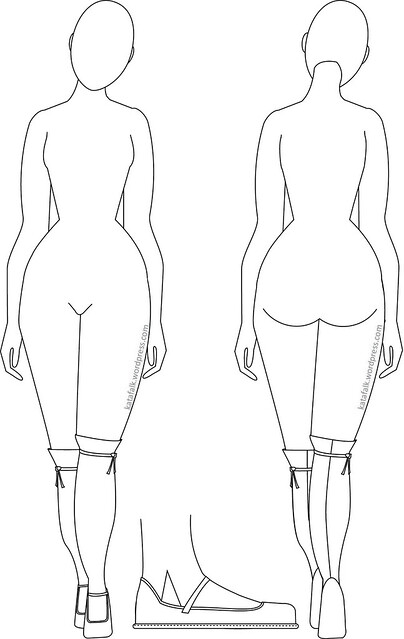
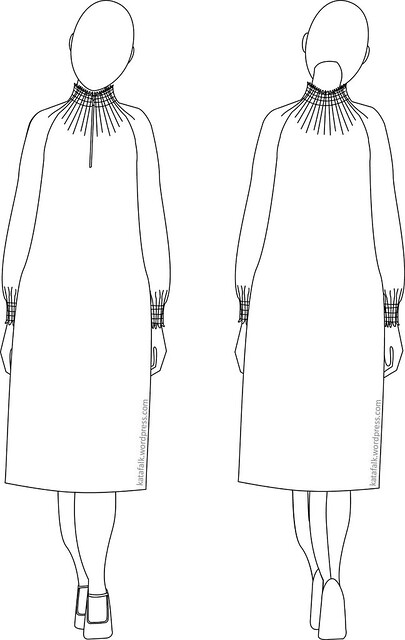

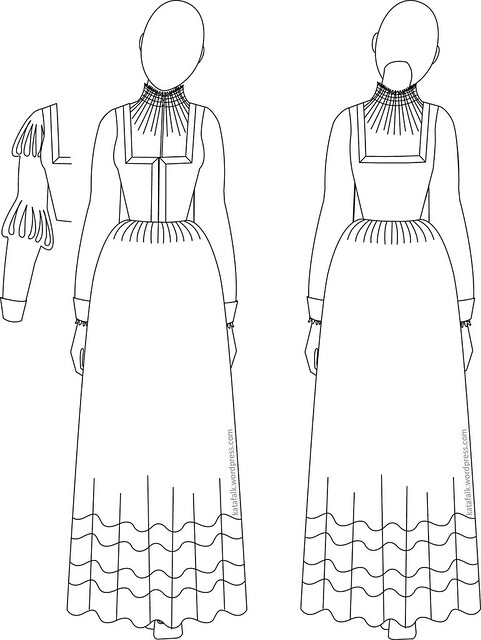
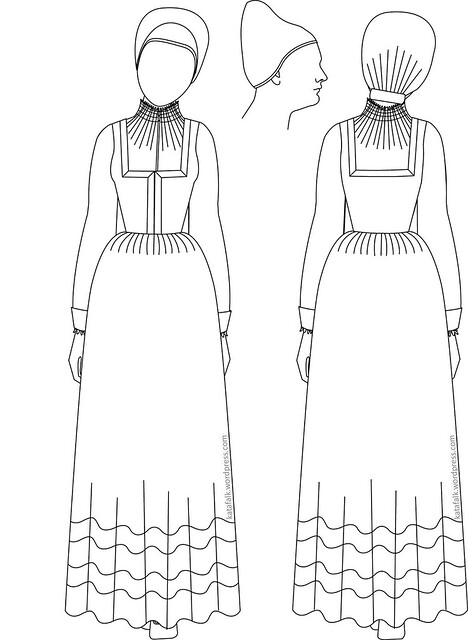
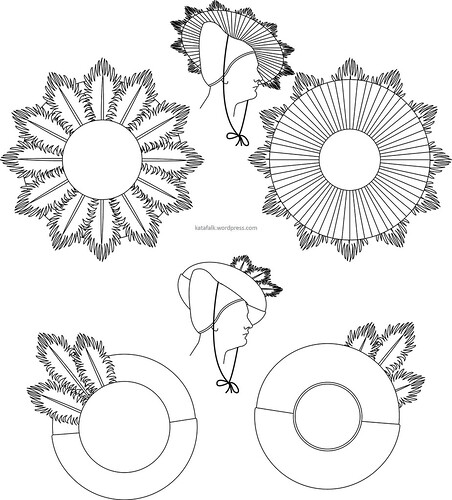
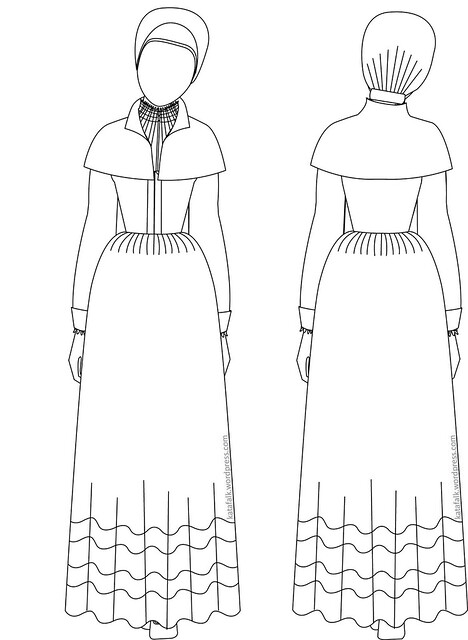
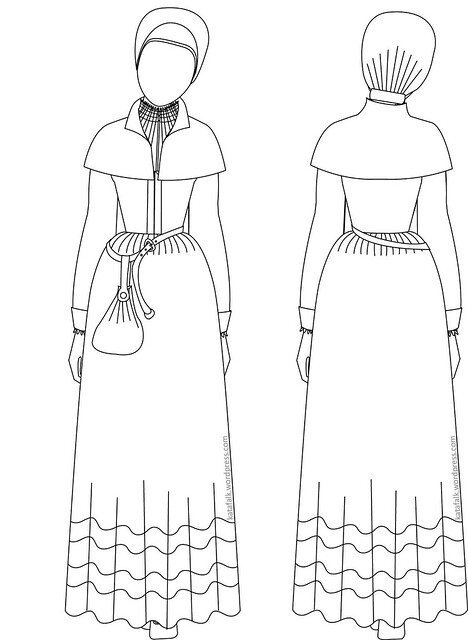
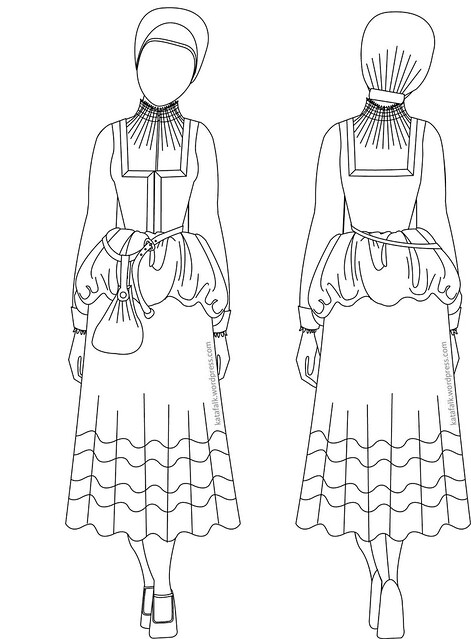
Thank you for an elucidating post!
Wow…….. great info, thank you!
http://www.historyextra.com/lingerie
I enjoyed your article – I think it is a very good starting point for anyone looking to put together a nice Trossfrau kit. I was wondering if you could please list your sources so that people (like myself) wanting more information will know where to look? Thanks!!!
Great article! I really enjoy your blog, so I have nominated you for a Liebster Award, (which you are free to accept or refuse.) The Liebster Award is basically an award that is by bloggers, for bloggers. It’s passed from person to person to encourage connection and support within our writing community, and to aid in the discovery of new and upcoming bloggers. Thanks for the great blog!
Thank you for all the information! I’ve been thinking of finally making a RenFaire costume, but didn’t care for the mostly English styles. Now, I can make a costume that reflects my German heritage!
Regarding the chemise: On a historical note, from my studies of 18th century clothing, hooks and eyes were almost unheard of even in the early 1800’s, since the technology for the wire-shaping was new and expensive. Most closures were either ties, lacings, or pins. For a chemise, the opening may have had fine cord lacing or simple ties, possibly inside the hem to keep it invisible, but many times the volume of the fabric hides the opening or keeps it pressed closed and no closure at all was added.
Also, the overall effect is like a Romanian blouse I bought years ago (neither vintage nor historical), with the smocked neckline and similar piecing. It never occurred to me when I bought it that it might resemble a garment from German history, but looking at it has helped me follow your technique. The weird thing about the blouse is, all the pieces were hemmed first and then somehow stitched together…it’s like it was whip-stitched on the outside, turned inside-out, and whip-stitched again. Does anyone know if this is a historically accurate construction method? or what the stitch might be?
Wow! That’s amasing! It was realy helpfull. Thank you! Now I’m going to look for patterns )))